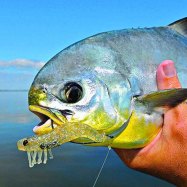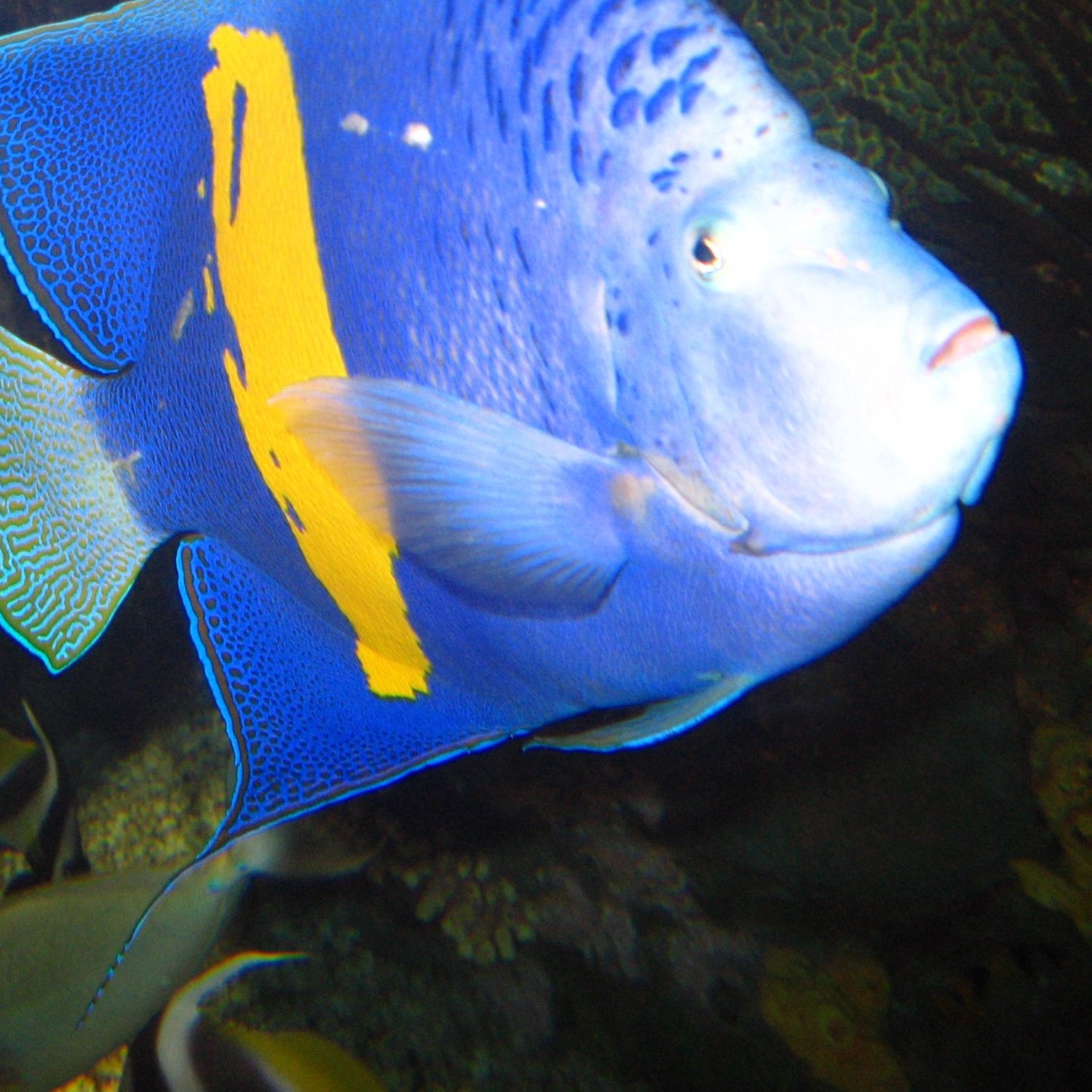
Bluefish
Up to 39 inches
The Bluefish, found in coastal regions, is a popular game fish known for its distinctive blue-green color and streamlined body shape. They can measure up to 39 inches in length and belong to the Pomatomidae family. These feisty creatures are a favorite among anglers and are known for their strong, swift movements in the water.
Animal Details Summary:
Common Name: Bluefish
Kingdom: Animalia
Habitat: Coastal waters, estuaries
The Fascinating World of Bluefish
Imagine yourself strolling along the coast, enjoying the cool ocean breeze, when suddenly you come across a group of blue-green shimmering fish. You may think they are just your ordinary fish, but these are actually bluefish, also known as Pomatomus saltatrix. They may not be as famous as dolphins or sharks, but these creatures have their own unique charm. In this article, we will take a deeper dive into the world of bluefish, learning about their behavior, habitat, and other interesting facts Bluefish.In Search of Bluefish
Before we delve into the specifics of bluefish, it's important to understand where they can be found. These carnivorous fish are mostly found in coastal waters and estuaries, making them a common sight for beachgoers. They are also known to travel in large schools, so if you are lucky, you may spot a large group of them swimming in the ocean.Bluefish are native to the Atlantic Ocean, with a geographical distribution that expands from the United States to South America. However, they are mostly found along the coast of the United States, particularly in the Northeast and Mid-Atlantic regions. They can also be found in countries like Mexico, Brazil, and South Africa.
Classification of Bluefish
Bluefish are a part of the Animalia Kingdom, meaning they are classified under the animal kingdom. They belong to the Chordata phylum, which includes all animals with a backbone. In terms of class, bluefish are a part of the Actinopterygii class, comprised of ray-finned fishes Blue Racer.Moving down the classification hierarchy, we come to their order, Perciformes, which includes fish with spiny fins. Finally, bluefish are classified under the Pomatomidae family, and their scientific name, Pomatomus saltatrix, is derived from this categorization. Overall, it can be said that bluefish are closely related to other species of fish, such as mackerels and tunas.
Appearance and Body Shape
Bluefish are known for their distinct coloring, with a greenish-blue shade on their back and a silver hue on their sides and belly. This coloration acts as camouflage, helping them blend in with their surroundings while also providing protection from predators.In terms of body shape, bluefish have a unique streamlined and elongated body, which helps them swim swiftly through the water. This body shape also reduces drag, allowing them to move with ease and speed. They have a slightly forked tail and a pointed snout, characteristics that make them stand out from other fish.
Size and Length
Bluefish can grow up to 39 inches in length, but on average, they are around 30 inches long. The largest recorded bluefish was caught off the coast of Cape Hatteras, North Carolina, measuring an astounding 51.5 inches. These fish are known for their massive size, which makes them a popular sport fish for recreational fishing.Another interesting fact is that bluefish tend to grow rapidly, reaching reproductive maturity at just 1-2 years old. This rapid growth makes them a valuable food source for both humans and their predators.
Diet and Feeding Habits
Bluefish are carnivorous, meaning they feed on other animals, particularly smaller fish. They are known to be aggressive and opportunistic predators, hunting in schools and attacking their prey from below, using their sharp teeth to tear off chunks of flesh.Some of their favorite prey includes herring, mackerel, menhaden, and even squid. They also feast on smaller fish found in estuaries, such as mullets and anchovies. Due to their predatory nature, bluefish play a significant role in maintaining the balance of marine ecosystems.
Habitat
As mentioned earlier, bluefish mainly inhabit coastal waters and estuaries. They are also known to inhabit oceanic waters, entering the shallow waters during warmer seasons. These fish typically prefer water temperature between 15-20°C, making them most prevalent during spring and summer.Bluefish tend to be highly migratory, moving towards the north in the warmer months and towards the south in the colder months. Their ability to acclimate to different water temperatures and salinity levels makes them a highly adaptable species.
Bluefish in the United States
Bluefish are highly valued among recreational fishermen in the United States, as they are a popular game fish and are relatively easy to catch compared to other species. They can be found along the east coast, from Maine to Florida, and are especially abundant in the Chesapeake Bay area.Aside from being a popular sport fish, bluefish also play a vital role in the commercial fishing industry. In 2019, the United States reported a total commercial landings of over 1 million pounds of bluefish, making it one of the most abundant commercial fish species in the country.
Threats and Conservation Efforts
While bluefish are abundant in numbers, they are not immune to the various threats facing marine life. Overfishing, water pollution, and changes in water temperature and acidity are some of the factors that pose a threat to their population. Additionally, as they are carnivorous, their diet is dependent on the availability of smaller fish, making them vulnerable to changes in the food chain.To protect bluefish and maintain their population, there have been various conservation efforts put in place. For instance, there are strict regulations in place for commercial fishing to prevent overexploitation. There are also efforts to reduce pollution and maintain the quality of water in their habitats. Overall, it is essential to continue monitoring and implementing conservation efforts to ensure the long-term survival of these beautiful creatures.
The Fascinating World of Bluefish
In conclusion, bluefish may not be as well-known as other marine animals, but they have their own unique charm and play an important role in the ecosystem. From their striking coloring to their impressive size and predatory nature, these fish have captivated the interest of marine enthusiasts and fishing enthusiasts alike. While they face various threats, efforts are being made to protect them and guarantee their sustainability in the future. Next time you come across a group of blue-green shimmering fish, remember the fascinating world of bluefish and the vital role they play in our oceans.

Bluefish
Animal Details Bluefish - Scientific Name: Pomatomus saltatrix
- Category: Animals B
- Scientific Name: Pomatomus saltatrix
- Common Name: Bluefish
- Kingdom: Animalia
- Phylum: Chordata
- Class: Actinopterygii
- Order: Perciformes
- Family: Pomatomidae
- Habitat: Coastal waters, estuaries
- Feeding Method: Carnivorous
- Geographical Distribution: Atlantic Ocean
- Country of Origin: United States
- Location: Coastal regions
- Animal Coloration: Greenish-blue on top, silver on sides and belly
- Body Shape: Streamlined, elongated
- Length: Up to 39 inches
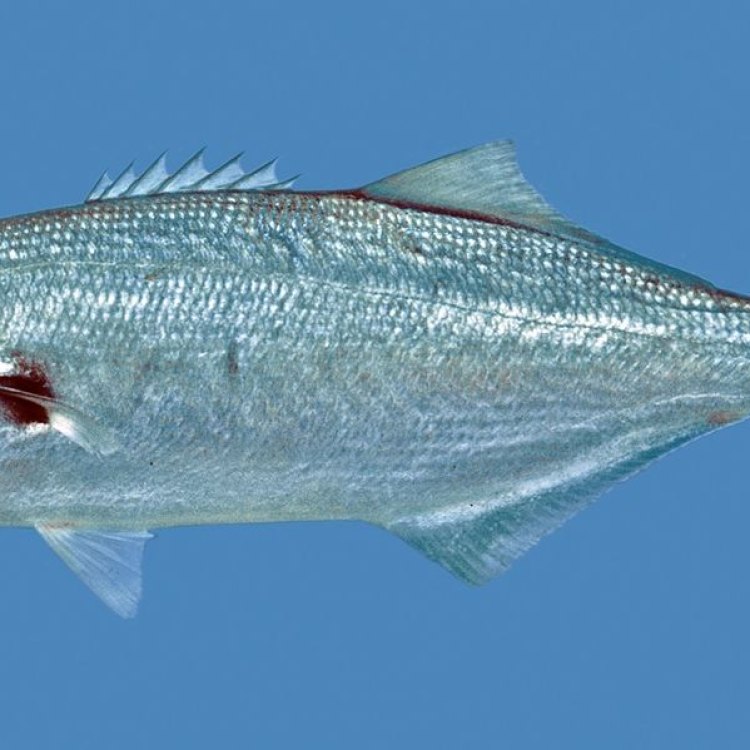
Bluefish
- Adult Size: 20-30 inches
- Average Lifespan: Approximately 9 years
- Reproduction: Sexual
- Reproductive Behavior: Spawning in offshore waters
- Sound or Call: No known vocalizations
- Migration Pattern: Seasonal migration along the coast
- Social Groups: Solitary or in small schools
- Behavior: Aggressive predators
- Threats: Overfishing, habitat loss
- Conservation Status: Not listed
- Impact on Ecosystem: Top predator, controls populations of prey species
- Human Use: Commercial and recreational fishing
- Distinctive Features: Sharp teeth, forked tail
- Interesting Facts: Known for their strong fighting ability and high-speed swimming
- Predator: Sharks, larger predatory fish
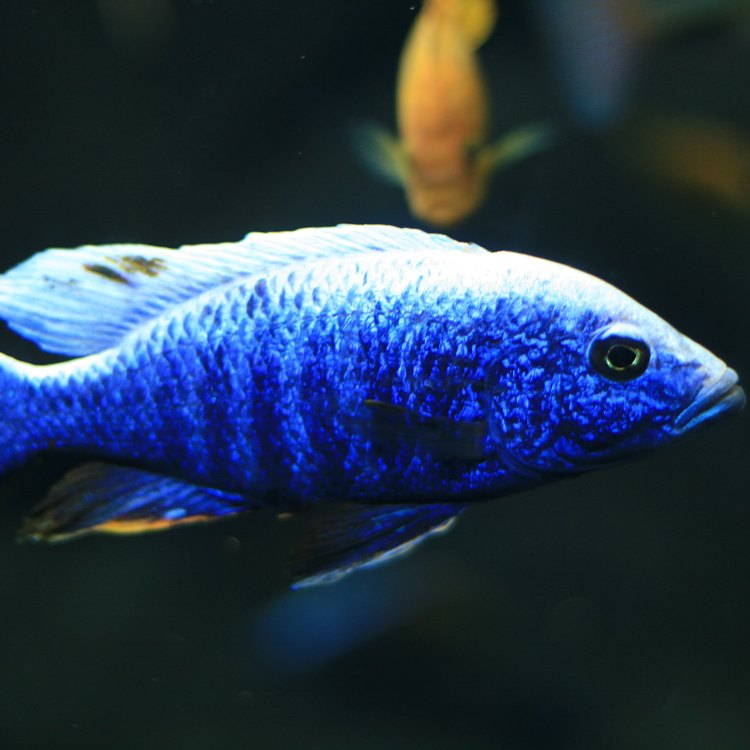
Pomatomus saltatrix
Fishing At The Edge Of The Sea - The Amazing Bluefish
The vast, seemingly endless expanse of the ocean has always been a source of wonder and mystery for humans. Its depths hold a myriad of fascinating creatures, each with its unique characteristics and place in the delicate balance of the marine ecosystem. One such creature is the bluefish, a fierce and powerful predator that inhabits the Atlantic coast of North America. This article delves into the world of the bluefish, revealing its distinctive features, behavior, and impact on the ecosystem PeaceOfAnimals.Com.The bluefish (Pomatomus saltatrix) is a species of fish that can be found in the western Atlantic Ocean, from Nova Scotia and Canada to Argentina. It is a member of the family Pomatomidae, which also includes the highly migratory and commercially important fish, the pompano. The bluefish is a large, predatory fish, reaching adult sizes of 20-30 inches and can weigh up to 12 pounds. It has a lifespan of approximately 9 years, making it a relatively short-lived species compared to other marine life.
One of the most distinctive features of the bluefish is its sharp, conical teeth. These teeth are essential for its predatory behavior, allowing it to easily tear through the flesh of its prey. Its body is elongated and slender, with a forked tail that aids in its high-speed swimming abilities. The blue and green coloration on its back gives way to a silvery-white belly, providing excellent camouflage in its natural habitat.
The bluefish is a sexually reproducing species, with females releasing their eggs into the open ocean, where males fertilize them Bowhead Whale. The reproductive behavior of bluefish is quite fascinating, as they engage in spawning in offshore waters during the warmer months of the year, from April to November. This behavior allows their offspring to have a higher chance of survival, as they are less likely to be eaten by larger predators.
Unlike many marine creatures, the bluefish is not known to produce any vocalizations. Therefore, its communication and social behavior rely on visual cues and body language. The bluefish is generally a solitary creature, but it can also be found in small schools, especially during the spawning season. These schools often consist of similarly sized individuals, with larger fish leading the group.
The bluefish's migration patterns are closely tied to the temperature and food availability along the Atlantic coast. They are known to migrate seasonally, following the cooler waters south during the winter months and returning to their northern range during the spring and summer. This seasonal migration also coincides with their spawning behavior, making it crucial for the survival of the species.
As aggressive predators, bluefish play a crucial role in the marine ecosystem. They are fast-swimming and voracious fish, feeding on a wide range of prey, including smaller fish, crustaceans, and squid. Their sharp teeth and strong jaws make them efficient hunters, and they are known to consume a significant amount of their body weight in food daily. Their presence in coastal waters helps control populations of their prey, ensuring a healthy balance in the ecosystem.
However, despite their importance in the marine food chain, bluefish face a significant threat from overfishing. Due to their commercial and recreational value, they are heavily targeted by fisheries, often leading to unsustainable fishing practices. The decline in their population not only affects the species itself but also has a ripple effect on the ecosystem. Bluefish are top predators, and their absence can cause an increase in their prey's population, leading to a decrease in other marine life lower in the food chain.
Apart from overfishing, the bluefish also faces threats due to habitat loss. Like many marine species, they require healthy and well-functioning ecosystems to thrive. The destruction of their traditional spawning grounds, pollution, and climate change can all have a devastating impact on their population.
Currently, the bluefish is not listed as an endangered or threatened species. However, conservation efforts are crucial in preserving their population and the ecological balance it maintains. Measures such as enforcing sustainable fishing practices and protecting their habitats can help secure the future of this iconic fish.
In addition to being an essential part of the marine ecosystem, the bluefish also holds significant economic value for humans. Commercial fisheries often target them for the valuable meat, and their strong fighting ability and high-speed swimming make them a popular game fish among recreational anglers. Despite their fierce nature, bluefish are caught using various fishing methods, including hook and line, gillnetting, and trawling.
For centuries, humans have been captivated by the ocean and all its wonders. The bluefish's sharp teeth, forked tail, and aggressive nature make it an intriguing and fearsome creature. Its presence in the coastal waters and its impact on the ecosystem highlight the interdependence of all marine life. As we continue to explore and utilize the ocean's resources, it is essential to remember the significance of maintaining a delicate balance to ensure the survival of all species, including the amazing bluefish.
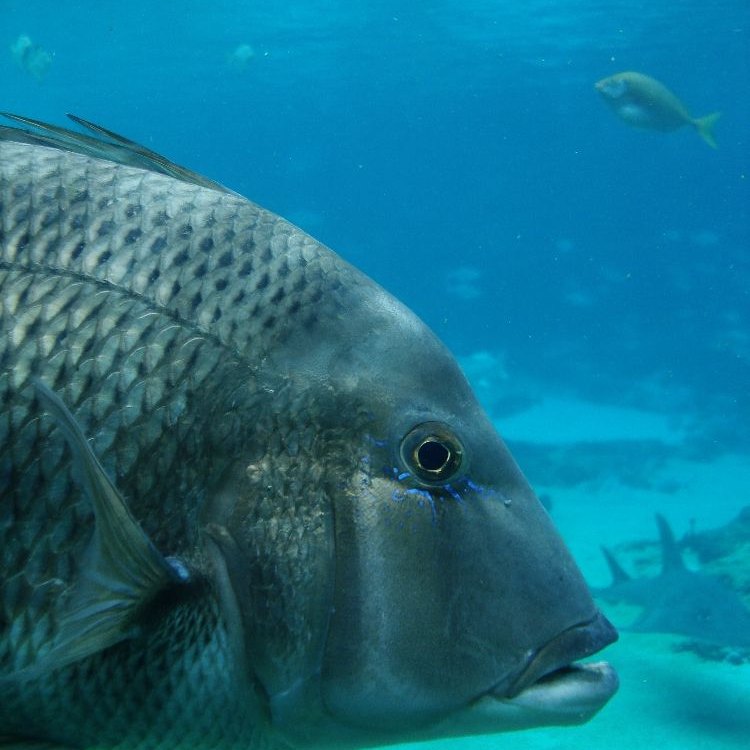
The Fascinating World of Bluefish
Disclaimer: The content provided is for informational purposes only. We cannot guarantee the accuracy of the information on this page 100%. All information provided here may change without prior notice.



